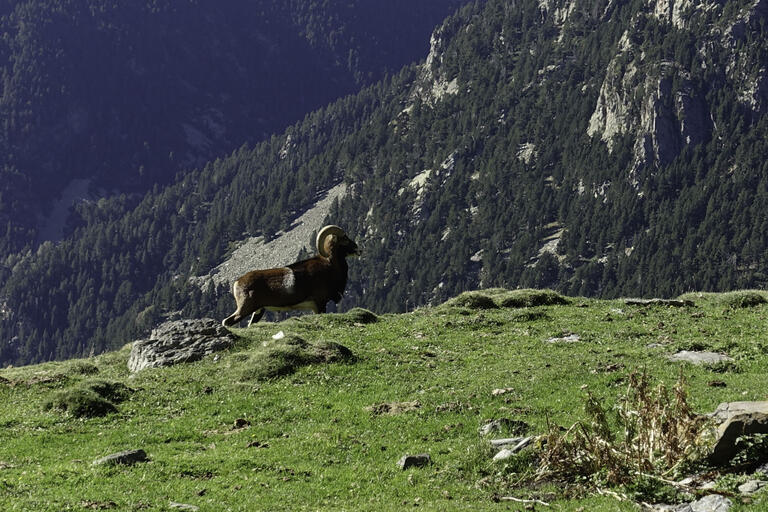
Introduction
If you are lucky enough, in a single outing through these valleys, we could find roe deer in the lower parts closer to the forest and chamois and mouflons in the upper meadows. The altitude distribution of these ungulates varies throughout the year depending on food availability, conditioned by summer drought, winter snowpack, etc.
These valleys have always been the territory of chamois. Roe deer have appeared recently thanks to the success of reintroduction efforts carried out at lower altitudes, and the natural dispersal of individuals has brought them up here.
The case of mouflons (foto) is different. The individuals we find are the result of French introductions made during the seventies on the north slope of Puigmal.
It is highly localized here in the Núria Valley (Vall de Núria) and Fontalba. It seeks open spaces in high mountains, more or less rugged and lightly snow-covered in winter. In winter, it descends to the shrub and early black pine zone. In summer, it moves to the French slope, where it finds cooler temperatures and more tender pastures.
Females and offspring form separate herds from males, and only during the breeding season do both herds come together (Oct-Nov). The clashes, the fights of males using their horns to conquer females, are spectacular. Gestation lasts 5 months, and offspring are born in March-April. They can live 18-20 years.